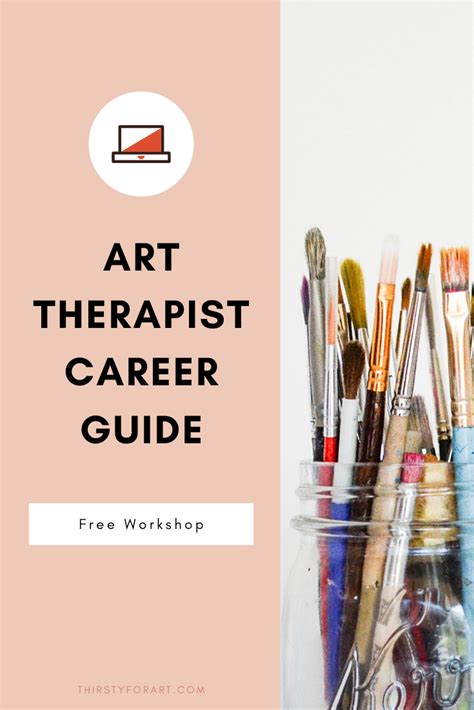Are you passionate about art and its transformative power? Do you believe in the therapeutic benefits of creative expression? If so, a career as an art therapist might be the perfect fit for you.

What is an Art Therapist?
Art therapists are licensed mental health professionals who use art as a therapeutic tool to help individuals explore their emotions, address mental health challenges, and improve their overall well-being. They work with diverse populations, including children, adults, seniors, and those with disabilities.
Growing Demand for Art Therapists
The demand for art therapists is projected to grow in the coming years. According to the Bureau of Labor Statistics, the employment of art therapists is expected to increase by 15% from 2021 to 2031. This growth is driven by several factors, including:
- Growing awareness of the benefits of art therapy
- Increased mental health issues in the population
- Expanded access to mental health services
Art Therapist Job Responsibilities
As an art therapist, your responsibilities may include:
- Conducting individual and group therapy sessions
- Facilitating art-making activities and interpreting their therapeutic significance
- Creating and maintaining a supportive and therapeutic environment
- Documenting client progress and developing treatment plans
- Collaborating with other healthcare professionals
Essential Qualities of an Art Therapist
To be a successful art therapist, you should possess the following qualities:
- Strong artistic skills and creativity
- Excellent communication and interpersonal skills
- Empathy and compassion
- Ability to work effectively with diverse populations
- Knowledge of mental health conditions and treatment approaches
Education and Training
To become an art therapist, you need a master’s degree in art therapy from an accredited program. Most programs require applicants to have a bachelor’s degree in art, psychology, or a related field.
Licensure and Certification
Art therapists must be licensed in most states. Licensure requirements vary, but typically include passing a national board exam and completing a supervised internship. Additional certifications, such as the Certified Art Therapist (ATR), can enhance your credibility and career prospects.
Job Opportunities
Art therapists work in a variety of settings, including:
- Mental health clinics and hospitals
- Schools and universities
- Nursing homes and assisted living facilities
- Rehabilitation centers
- Private practice
Salary and Benefits
According to the American Art Therapy Association, the median salary for art therapists in the United States is approximately $54,000 per year. However, salaries can vary depending on factors such as location, experience, and setting.
Benefits of a Career in Art Therapy
A career as an art therapist offers numerous benefits, including:
- Personal fulfillment from helping others through creative expression
- Opportunity to impact the lives of individuals and communities
- Work-life balance and flexibility in many settings
- Continuous professional development and learning opportunities
How to Find Art Therapist Job Openings
There are several ways to find art therapist job openings:
- Visit online job boards dedicated to healthcare and mental health, such as Indeed, Monster, and LinkedIn
- Reach out to local mental health clinics and hospitals to inquire about openings
- Attend industry conferences and workshops to network with potential employers
- Use social media platforms like LinkedIn and Twitter to search for job postings
Conclusion
If you are passionate about art, mental health, and transforming people’s lives, a career as an art therapist might be your calling. With the growing demand for these professionals, now is an excellent time to explore this rewarding field.
Additional Information for Job Seekers
10 Tips for Writing a Standout Art Therapist Resume
- Highlight your artistic skills and creativity.
- Quantify your accomplishments with specific examples.
- Use action verbs to describe your experiences.
- Tailor your resume to each job opening.
- Include a cover letter that explains your motivations and goals.
- Proofread your resume carefully for any errors.
- Seek feedback from a trusted source.
- Use a professional resume template.
- Consider using keywords relevant to the art therapy field.
- Showcase your passion for helping others.
Frequently Asked Questions about Art Therapy
What is the difference between an art therapist and a therapist?
An art therapist is a licensed mental health professional who uses art as a therapeutic tool. A therapist does not necessarily have formal training in art therapy and may use a variety of treatment modalities.
How do I know if art therapy is right for me?
Art therapy can be beneficial for individuals who enjoy creating art, feel comfortable expressing themselves through art, and are open to exploring their emotions and experiences in a creative way.
What are the limitations of art therapy?
Art therapy is not a suitable treatment for all mental health conditions or individuals. It may not be effective for individuals who are not motivated to participate in art activities or who have severe mental health symptoms.
Comparison of Art Therapist Salaries by State
| State | Median Salary |
|---|---|
| California | $65,000 |
| New York | $60,000 |
| Florida | $55,000 |
| Texas | $52,000 |
| Illinois | $50,000 |
Pain Points and Motivations of Art Therapy Clients
Pain Points:
- Emotional distress and mental health challenges
- Difficulty expressing emotions or coping with trauma
- Lack of self-esteem and confidence
- Isolation and loneliness
- Chronic pain or physical limitations
Motivations:
- Desire to heal and improve mental health
- Interest in exploring emotions through art
- Need for a safe and supportive environment
- Desire to connect with others and build relationships
- Hope for personal growth and transformation
Conclusion
A career in art therapy offers a unique and rewarding opportunity to make a meaningful impact on the lives of others. With the growing demand for these professionals, now is a great time to explore this field and find your dream job helping others through the transformative power of art.
